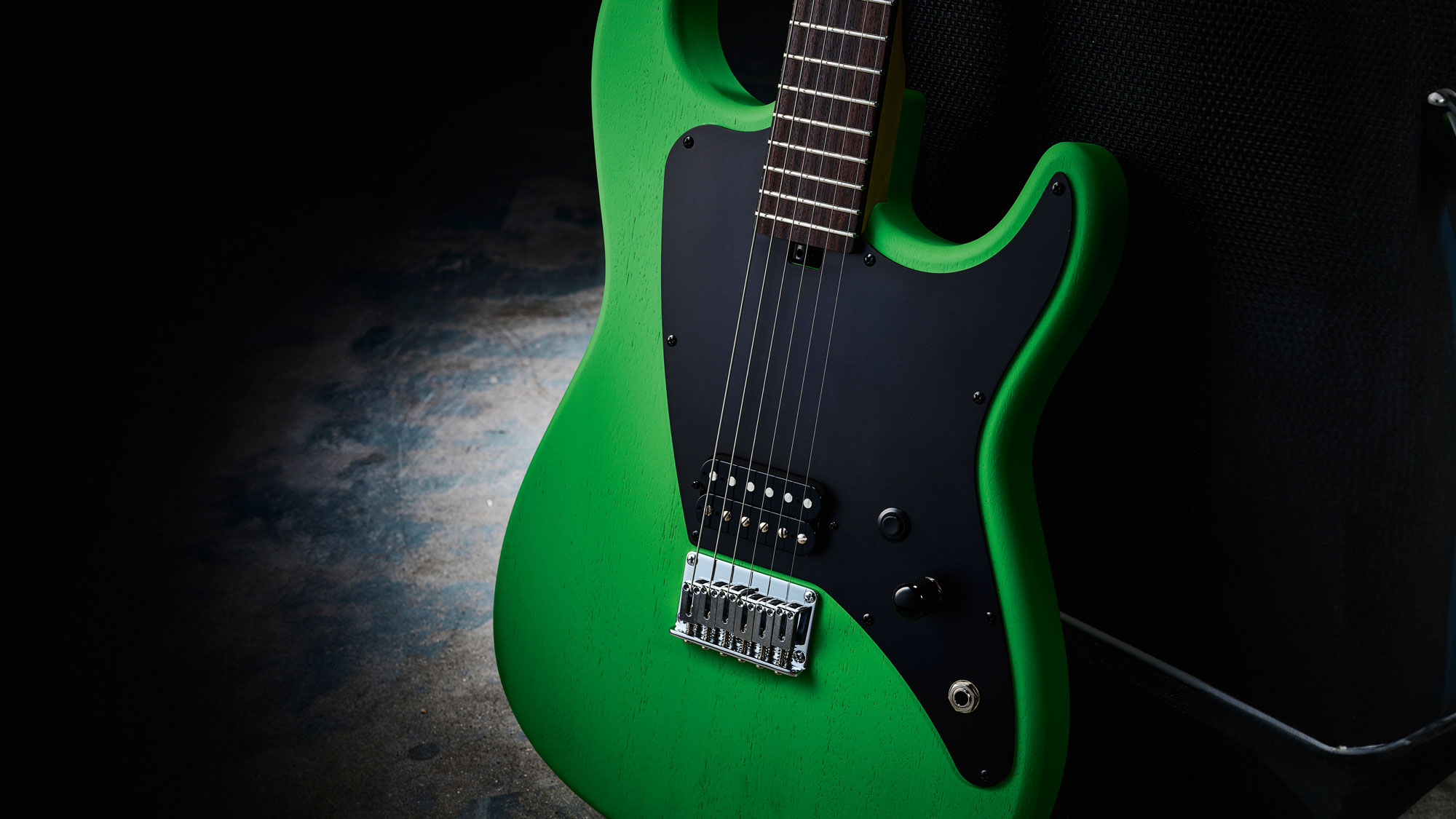Guitar World Verdict
When a guitar plays and sounds as good as this one, it’s a little hard to be objective... Our only dilemma would be which body style to go for. But having played both, we wouldn’t let that worry you too much. Either style sounds superb.
Pros
- +
Excellent craft.
- +
Good weight, great neck.
- +
Playability matched by great dual sounds of the humbucker. Comes with a Mono Sleeve gigbag…
Cons
- -
Some might prefer a tone control instead of the kill-button.
You can trust Guitar World
What’s this? Is Manson Guitar Works celebrating the 70th anniversary of the Gibson Les Paul Junior? No, clearly not, but that ‘Junior’ moniker is applied to many single-pickup guitars and that’s the proposition here.
The new Manson Junior comes in the brand’s classic modern T-style MA shape and the new Verona outline we have here, obviously based on the Stratocaster and a request from Manson majority shareholder Matt Bellamy.
The Ashburton-based Brit maker, who currently has nine staff and an output between 200 and 300 UK-built guitars annually, took a close look at every manufacturing process to hone it down to the base essentials without compromising quality in the least.
Like many makers, particularly those in the UK, Manson is using lightweight obeche for the Junior’s solid bodies – and it’s a first for a Manson production guitar. Equally on trend is the satin open-pore finish, which is offered in five colours.
We also get top-line Gotoh hardware: the popular all-steel through-string block saddle bridge and those smoothly shaped 510 tuners with height-adjustable posts, which are set with staggered heights here to remove the need for one or two string trees.
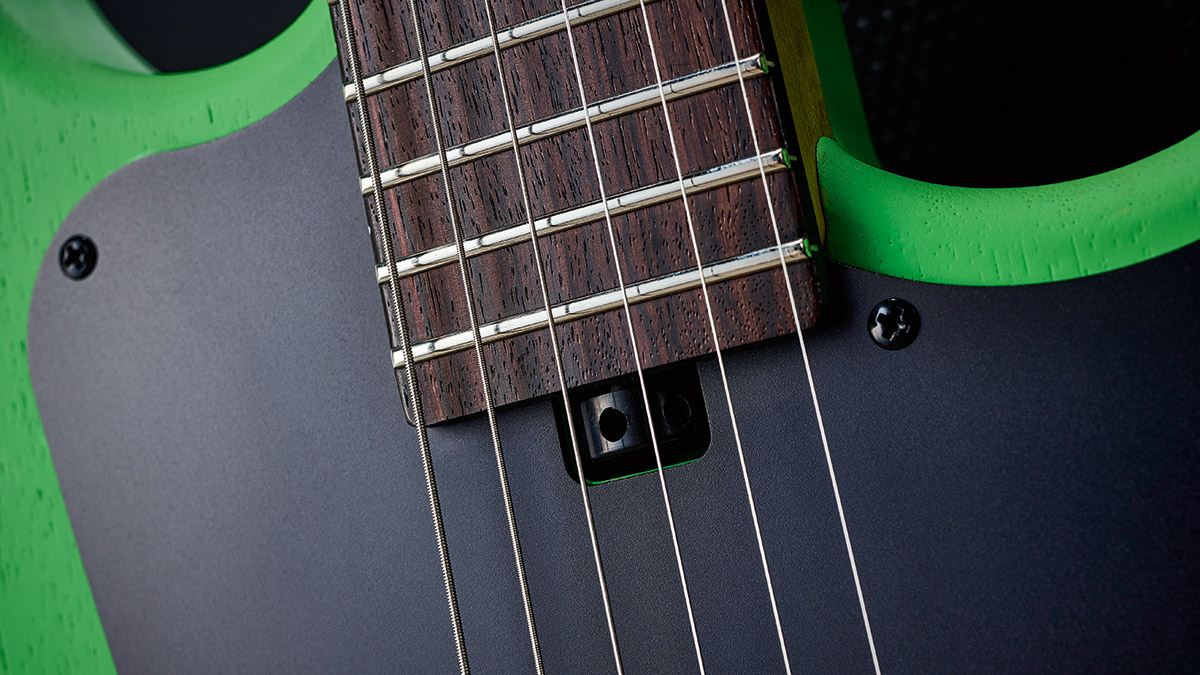
All the electrics, including the output jack, are mounted on a rugged black-coated aluminium scratchplate, while the impressive Fender-scale, slab-sawn, satin-finished maple neck is screwed to the body on a standard square heel platform.
We only get side dots (no face markers) on the unbound rosewood fingerboard, but the fretwork and edge rolling is exceptional, as is the neck shape. It might be a streamlined ‘basic’ design, not least after Manson only recently unveiled the £14k GEO Mask Edition, but the execution is faultless.
All the latest guitar news, interviews, lessons, reviews, deals and more, direct to your inbox!
Feel & Sounds
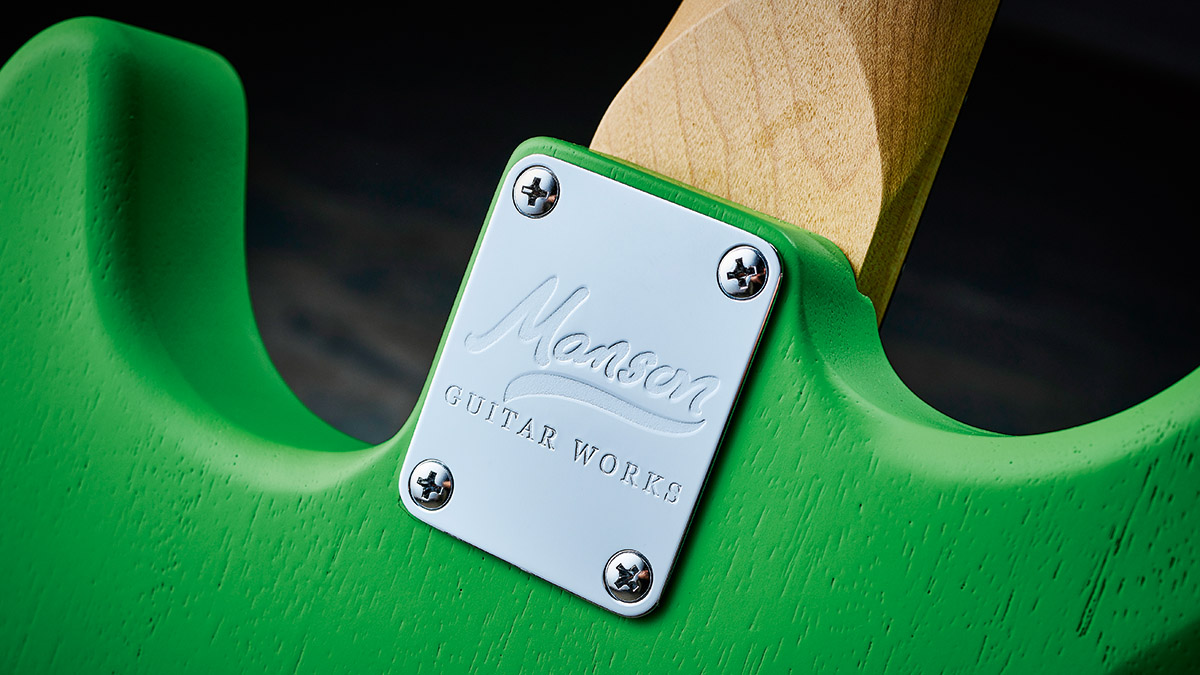
We’d argue ‘feel and sound’ are the essence of this guitar. First off, the body wood choice ensures it’s far from overweight at 3.31kg (7.28lb), although you can expect some variance; an MA Junior that we also had for our sound test was super light at just 2.58kg (5.68lb).
In combination with the clearly very thin finish, the Verona rings like a bell strummed acoustically, a feature that’s always been a part of any Manson electric guitar we’ve played.
The Dirty Rascal is just as at home with classic rock duties as it is with more progressive and heavily gained styles
The neck shaping and feel are just as impressive. It’s a pretty mainstream width and depth (42.8mm wide at the nut, 20.6mm deep at the 1st fret, 22.5mm by the 12th), but the ‘soft V’ profile pares away the shoulders on the neck and it actually feels slimmer than it is in reality.
There’s virtually zero neck flex, too, and a shape this good just disappears, to our hands at least. The medium-size fretwire (measured at 2.65mm wide by 1.2mm high) isn’t over-big and has good height, and the setup is spot on, like every other detail of the guitar.
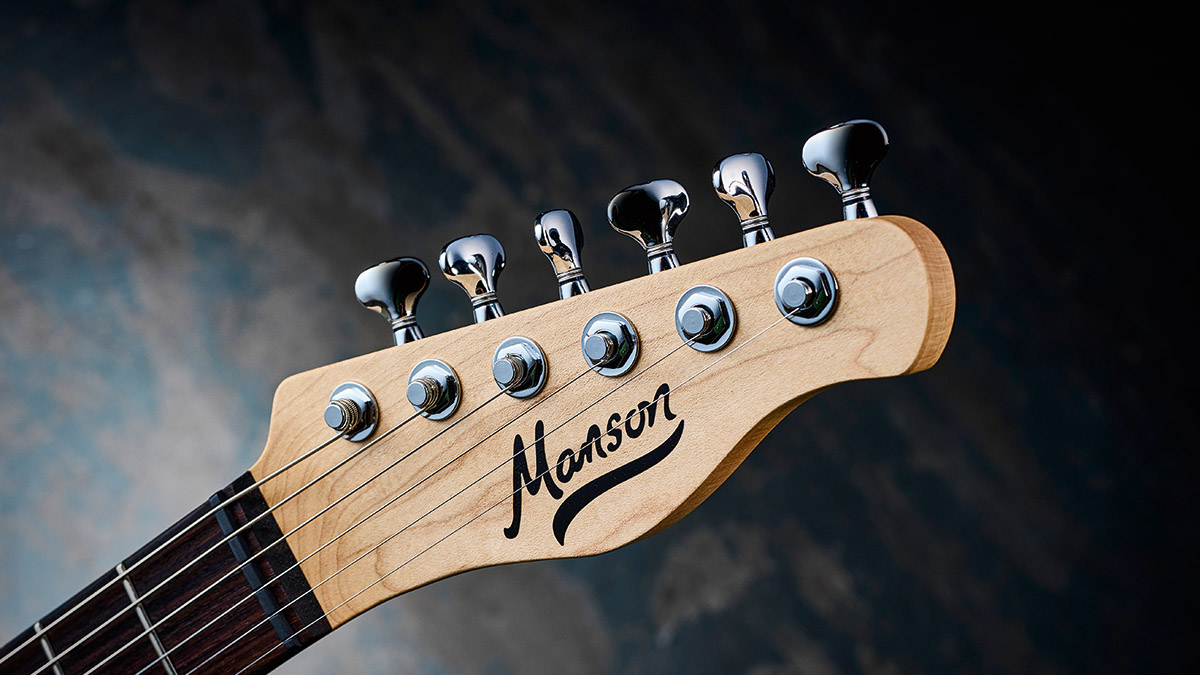
There might just be a single open-coil Manson Dirty Rascal humbucker, but alongside a kill-button for those staccato effects, it’s the single volume control that’s key here. It’s actually a push-push switched pot that Manson calls its Mojo switch, which, when down, links the humbucker’s coils in series as normal. Push it up, though, and the coils are wired in parallel, producing a cleaner, lighter and more single-coil sound that is still hum‑cancelling.
Warming up our test amps with a 1957 Gibson Les Paul Junior puts us in the mind of that benchmark tone. And with a bit of a ‘beat that’ challenge, we plugged in the Verona Junior (and then the MA Junior).
Yes, they’re different, but they really capture the raucous power of the Gibson. It’s a little brighter full up with a little less body, but it’s a Junior all right: the archetypal snotty‑nosed punk (or at least the Dirty Rascal!) of the electric guitar family.

But we’re not reviewing an old Gibson, and although we only have a volume here (no tone control), the circuit is very well tuned. Pulling back the volume just lightens things and loses a little high-end sharpness but leaves plenty of clout for some ballsy rhythm ’n’ riffing duties.
Pushed up, however, the Mojo switch changes the character, becoming lighter, definitely more single-coil-like or perhaps Filter’Tron-like, and with the volume full up, there’s plenty of presence and yet pulling it back just rounds the high-end subtly. Kick in some reverb and a bit of slapback and we’re in rockabilly street: it’s turned into a Gretsch-y Esquire!
The kill-button does all the stuttering you want and, to be honest, it’s a surprisingly versatile single-pickup guitar with the quality of the frankly quite diverse sounds we’re hearing. Bundle in the light weight, the raw resonance and the superb playability and this more than ticks the working guitar box. Enough words: there’s playing to do!
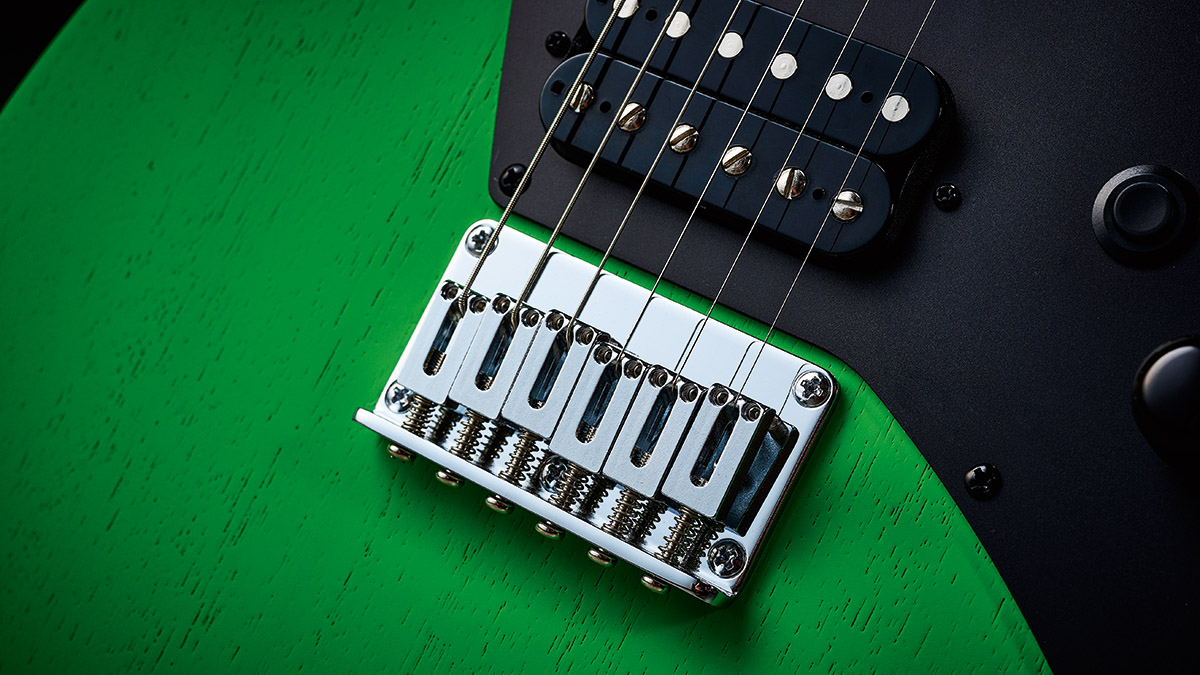
Verdict
When a guitar plays and sounds as good as this one, it’s a little hard to be objective. As always, Manson’s craft is superb, but even though this Junior is the most cost-effective guitar the brand builds here in the UK by quite a margin, there’s nothing remotely cut-price about it.
From the good weight and superb neck craft, to the very well-voiced single humbucker with some expansive options, not to mention the included Mono Sleeve gigbag, here’s a working guitar that’s superbly fit for purpose.
That kill-button might suggest a more modernist aim, but the voicing of the Dirty Rascal humbucker is just as at home with your classic rock duties as it is with more progressive and heavily gained styles. Meanwhile, the cleaner parallel voice offers a very valid (and still hum-cancelling) single-coil-like flavour that gives the Junior a viable and usable duality.
Our only dilemma would be which body style to go for. But having played both, we wouldn’t let that worry you too much. Either style sounds superb.
Specs
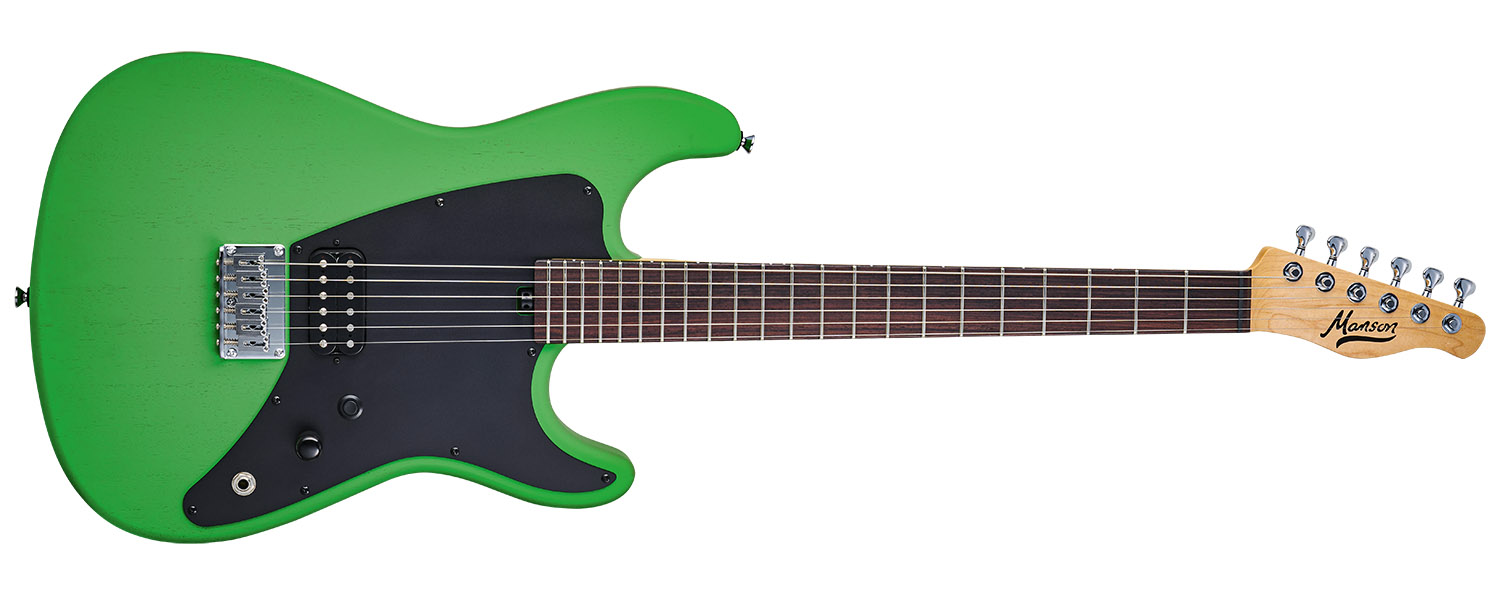
- PRICE: £1,399 (inc gigbag)
- ORIGIN: UK
- TYPE: Double-cut bolt-on solidbody electric
- BODY: Obeche
- neck: Maple, soft V profile, bolt-on
- SCALE LENGTH: 648mm (25.5”)
- NUT/WIDTH: Black Graph Tech/42.8mm
- FINGERBOARD: Rosewood, 305mm (12”) radius
- FRETS: 22, medium jumbo
- HARDWARE: Gotoh 6-saddle through-string bridge, Gotoh 510 HAP tuners
- STRING SPACING, BRIDGE: 52.5mm
- ELECTRICS: 1x Manson Dirty Rascal humbucker, kill-button, master volume (with push-push ‘Mojo’ series/parallel switch)
- WEIGHT (kg/lb): 3.31/7.28
- OPTIONS: The single-cut MA Junior has the same price and spec, just a different body shape
- RANGE OPTIONS: The UK-made ORYX range starts at £2,899, the same as the new MB-1 ‘New Era’ models. Manson’s licensed Indonesian-made Meta Series guitars start at £499
- LEFT-HANDERS: Not currently
- FINISHES: Neon Green (as reviewed), Miami Blue, Neon Pink, Dry Satin Black and Vivid Mustard Yellow – open-pore finish
- CONTACT: Manson Guitar Works

Dave Burrluck is one of the world’s most experienced guitar journalists, who started writing back in the '80s for International Musician and Recording World, co-founded The Guitar Magazine and has been the Gear Reviews Editor of Guitarist magazine for the past two decades. Along the way, Dave has been the sole author of The PRS Guitar Book and The Player's Guide to Guitar Maintenance as well as contributing to numerous other books on the electric guitar. Dave is an active gigging and recording musician and still finds time to make, repair and mod guitars, not least for Guitarist’s The Mod Squad.
